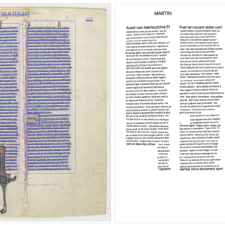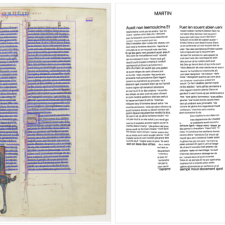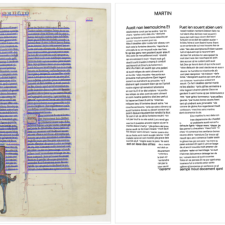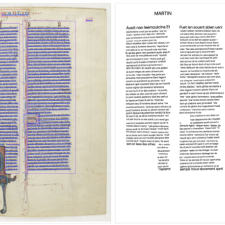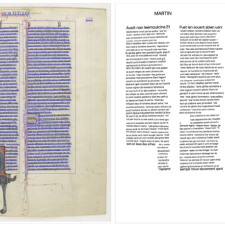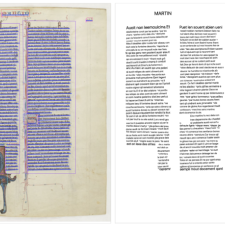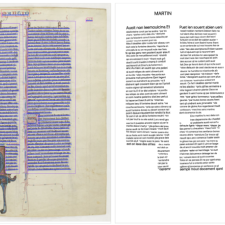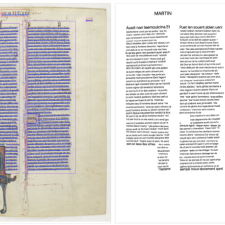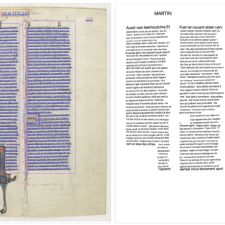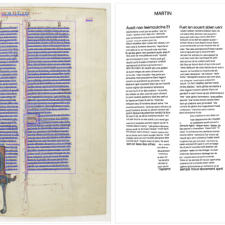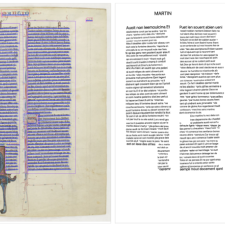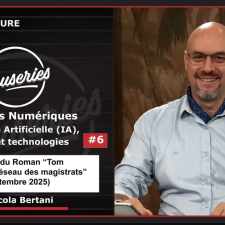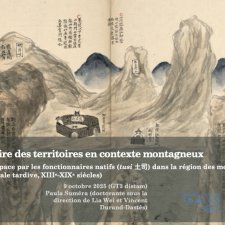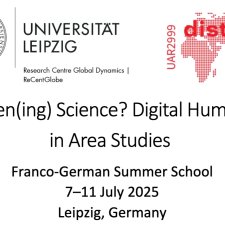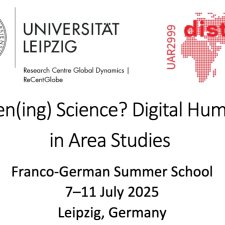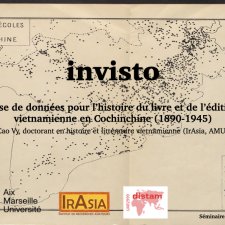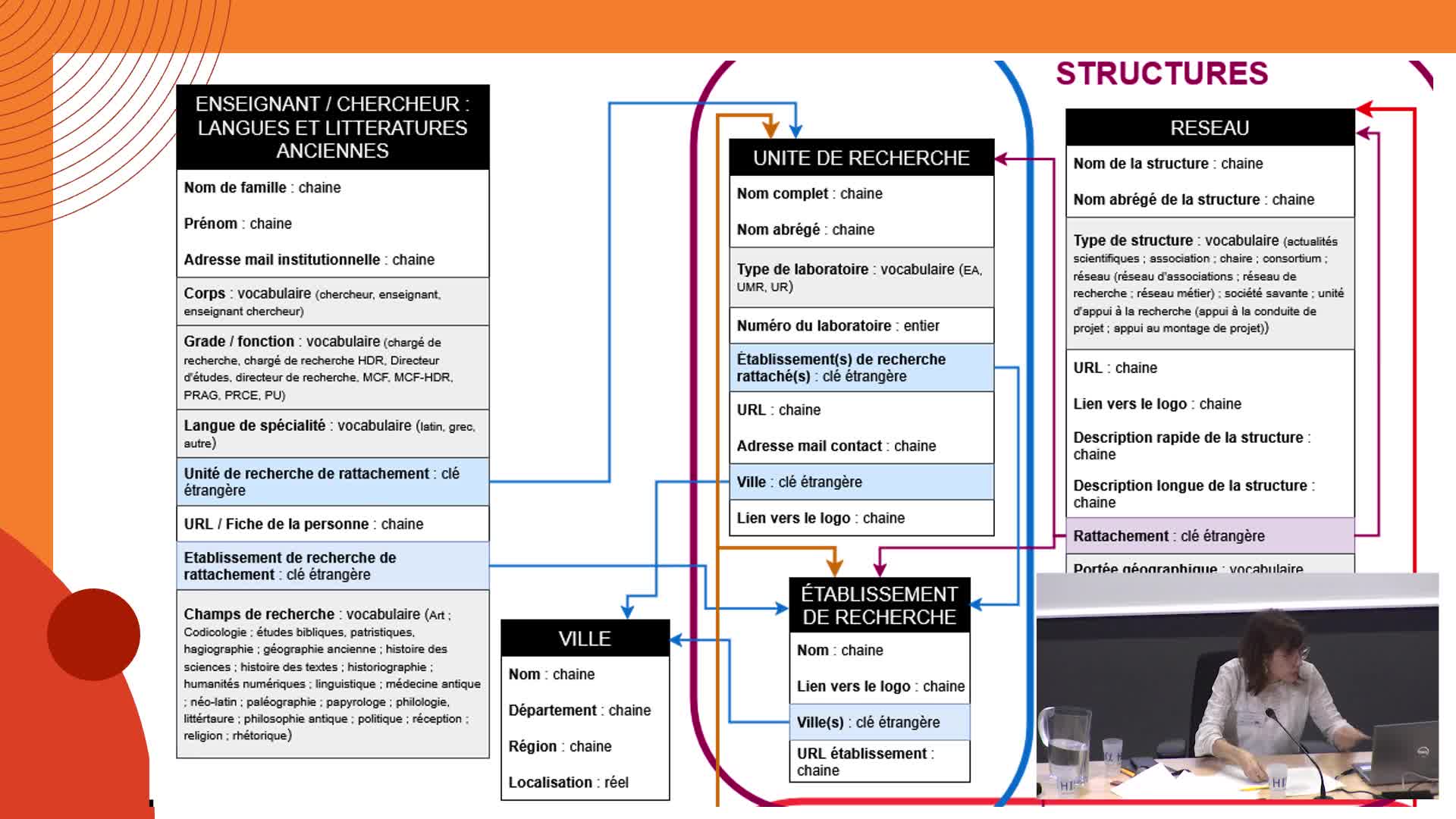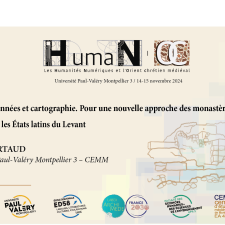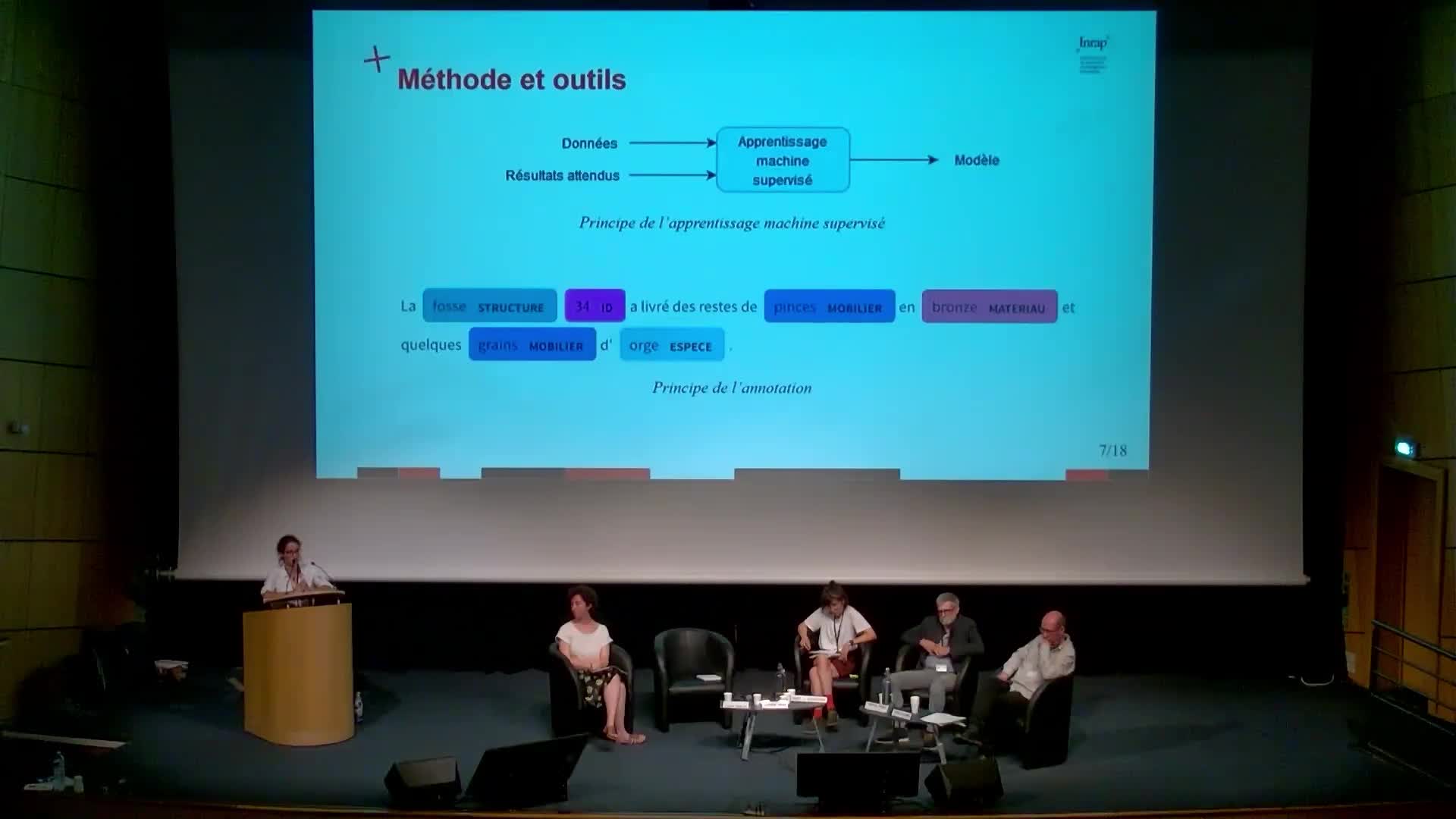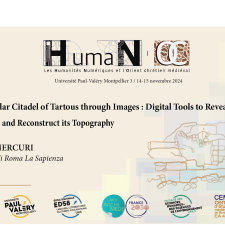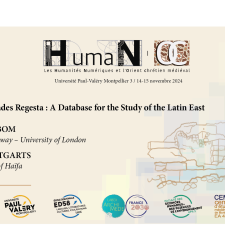Notice
2.7 : HTR of Handwritten Paleographic Greek Text as a Function of Chronology
- document 1 document 2 document 3
- niveau 1 niveau 2 niveau 3
Descriptif
par Platanou Paraskevi (Athens University of Economics and Business)
Today classicists are provided with a large number of digital tools which, in turn, offer possibilities for further study and new research goals. In this paper, we explore the idea that old Greek handwriting can be machine-readable and consequently, researchers can study the target material fast and efficiently. The overall aim of this paper is to assess HTR for old Greek manuscripts. To address this statement, we study and use images of the Oxford University Bodleian Library Greek manuscripts. By manually transcribing images, we have created and present here a new dataset for Handwritten Paleographic Greek Text Recognition. The dataset instances have been organized by establishing as a leading factor the century to which the manuscript and hence the image belongs. In this way, the HTR performance can reveal century-specific challenges when it comes to Handwritten Paleographic Greek Text Recognition.
Intervention / Responsable scientifique
Thème
Dans la même collection
-
2.10 : Clôture Colloque "Documents anciens et reconnaissance automatique des écritures manuscrites"
PincheAriane2.10 : Clôture Colloque "Documents anciens et reconnaissance automatique des écritures manuscrites"
-
2.8 : Reconnaissance et extraction d’informations dans des tableaux manuscrits historiques
PincheAriane2.8 : Reconnaissance et extraction d’informations dans des tableaux manuscrits historiques
-
2.6 : EpiSearch. Recognising Ancient Inscriptions in Epigraphic Manuscripts
BoschettiFederico2.6 : EpiSearch. Recognising Ancient Inscriptions in Epigraphic Manuscripts
-
2.4 : Expérimentations pour l’analyse automatique de sources chinoises anciennes
Vidal-GorèneChahan2.4 : Expérimentations pour l’analyse automatique de sources chinoises anciennes
-
2.3 : Analyse, Reconnaissance et Indexation des manuscrits CHAM
SchweyerAnne-ValérieBurieJean-Christophe2.3 : Analyse, Reconnaissance et Indexation des manuscrits CHAM
-
2.1 : FoNDUE - A Lightweight HTR Infrastructure for Geneva
GabaySimon2.1 : FoNDUE - A Lightweight HTR Infrastructure for Geneva
-
1.3 : HTR fine tuning for medieval manuscripts models: strategies and evaluation
Torres AguilarSergioJolivetVincent1.3 : HTR fine tuning for medieval manuscripts models: strategies and evaluation
-
2.5 : Sharing HTR datasets with standardized metadata: the HTR United initiative
ChaguéAlixClériceThibault2.5 : Sharing HTR datasets with standardized metadata: the HTR United initiative
-
1.10 : Segmentation Mode for Archival Documents with Highly Complex Layout
StoeklDaniel1.10 : Segmentation Mode for Archival Documents with Highly Complex Layout
-
2.9 : Retour d’expériences sur l’utilisation comparée de plusieurs de dispositifs de transcription …
TufféryChristophe2.9 : Retour d’expériences sur l’utilisation comparée de plusieurs de dispositifs de transcription numérique d’archives de fouilles archéologiques
-
2.2 : From HTR to Critical Edition: A Semi-Automatic Pipeline
StoeklDaniel2.2 : From HTR to Critical Edition: A Semi-Automatic Pipeline
-
1.7 : De Transkribus à eScriptorium : retour(s) d’expérience sur l’usage d’outils d’HTR appliqués à…
LeblancElina1.7: De Transkribus à eScriptorium : retour(s) d’expérience sur l’usage d’outils d’HTR appliqués à un corpus d’imprimés espagnols du XIXe siècle
Avec les mêmes intervenants et intervenantes
-
2.10 : Clôture Colloque "Documents anciens et reconnaissance automatique des écritures manuscrites"
PincheAriane2.10 : Clôture Colloque "Documents anciens et reconnaissance automatique des écritures manuscrites"
-
2.8 : Reconnaissance et extraction d’informations dans des tableaux manuscrits historiques
PincheAriane2.8 : Reconnaissance et extraction d’informations dans des tableaux manuscrits historiques
-
1.11 : SegmOnto – A Controlled Vocabulary to Describe Historical Textual Sources
GabaySimonPincheAriane1.11 : SegmOnto – A Controlled Vocabulary to Describe Historical Textual Sources
-
Sur le même thème
-
Causeries Culture - Humanités Numériques, Intelligence Artificielle, littérature et technologies #6
PorlierChristopheBertaniNicolaCauseries Culture - Humanités Numériques, Intelligence Artificielle, littérature et technologies #6
-
Faire une histoire des territoires en contexte montagneux : l’organisation de l’espace par les fonc…
SuméraPaula[séminaire] Faire une histoire des territoires en contexte montagneux : l’organisation de l’espace par les fonctionnaires natifs (tusi 土司) dans la région des monts Wuling (Chine impériale tardive,
-
Digital Benin: a digital platform connecting the displaced royal artefacts from Benin Kingdom
Digital Benin: a digital platform connecting the displaced royal artefacts from Benin Kingdom
-
Multilinguality and data access: an area studies librarian’s perspective
WagnerCosimaMultilinguality and data access: an area studies librarian’s perspective
-
InVisto : Base de données pour l’histoire du livre et de l’édition vietnamienne en Cochinchine (18…
CaoThúy VyL’histoire du livre et de l’édition vietnamienne en Cochinchine (1890-1945)
-
Comment s’orienter dans la forêt des ressources et des outils numériques ?
BurriInèsAntiqui.TXTes - Sciences des textes anciens
-
Base de données et cartographie. Pour une nouvelle approche des monastères latins dans les États la…
ArtaudFlorianÀ travers son projet doctoral, Florian Artaud propose une relecture des institutions monastiques latines dans les États latins d’Orient, en les abordant sous l’angle de la territorialité. Au cœur de
-
L'IA comme aide à la recherche : l'expérimentation du traitement automatique des langues appliqué a…
MenuArianeAriane Menu (direction scientifique et technique, Inrap) présente ici un exemple d'utilisation du traitement automatique des langues pour repérer des mots-clés dans un corpus de texte et montre
-
The Templar Citadel of Tartous through Images: Digital Tools to Reveal its Origins and Reconstruct …
MercuriLorenzoDans cette communication, Lorenzo Mercuri explore sous un angle renouvelé la citadelle templière de Tartous, en Syrie, grâce aux apports des outils numériques. En croisant histoire, archéologie et
-
Traiter les inscriptions et graffitis de l’Orient latin : l’environnement numérique de l’ERC GRAPH-…
Ingrand-VarenneEstelleDans cette communication, Estelle Ingrand-Varenne présente l’environnement numérique de travail développé dans le cadre du projet ERC GRAPH-EAST (2021–2027), consacré aux inscriptions et graffitis en
-
L’apport des humanités numériques à l’étude des grafiiti dans les lieux saints : prospecter, enregi…
DussartClémentClément Dussart présente, dans le cadre du projet ERC GRAPH-EAST, les apports des humanités numériques à l’étude des graffiti dans les lieux saints de l’Orient chrétien médiéval. Photogrammétrie,
-
The Crusades Regesta: A Database for the Study of the Latin East
GutgartsAnnaBomMyra MirandaDans cette communication, Anna Gutgarts et Myra M. Bom présentent l'histoire et les enjeux de la base de données The Crusades Regesta. Cette base de données, initiée par Jonathan Riley-Smith, est


